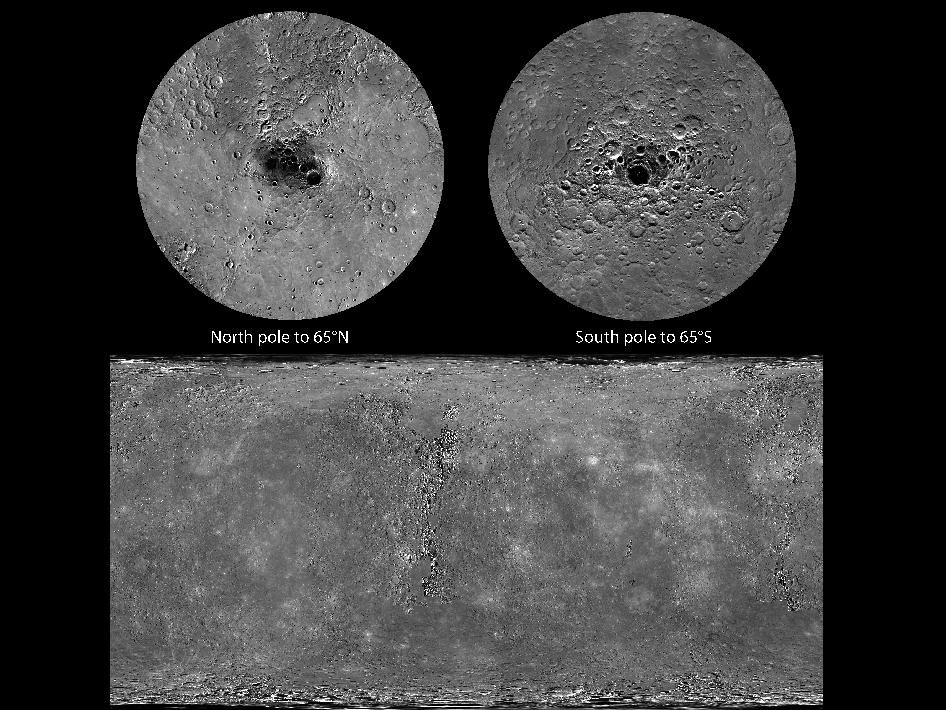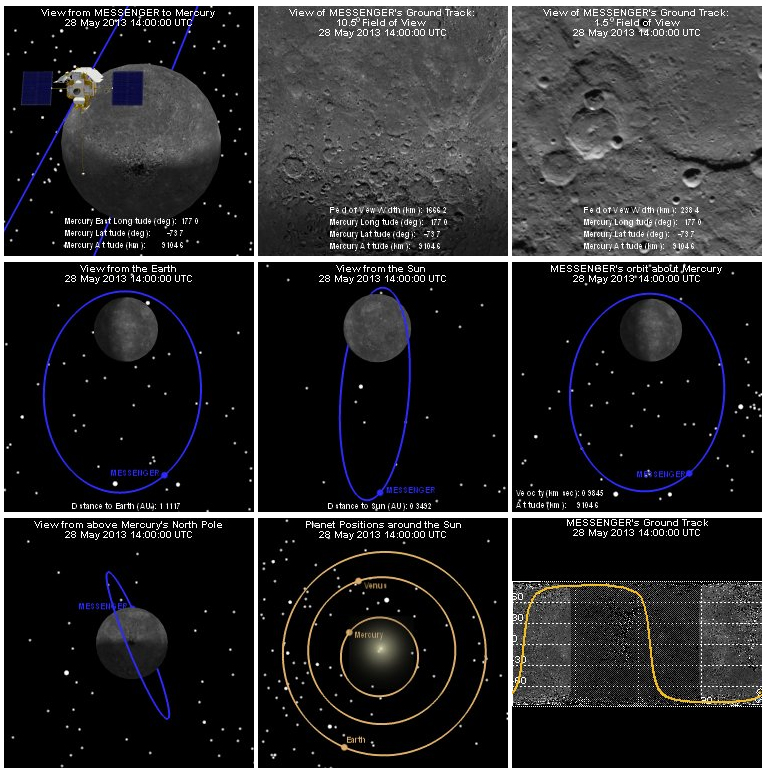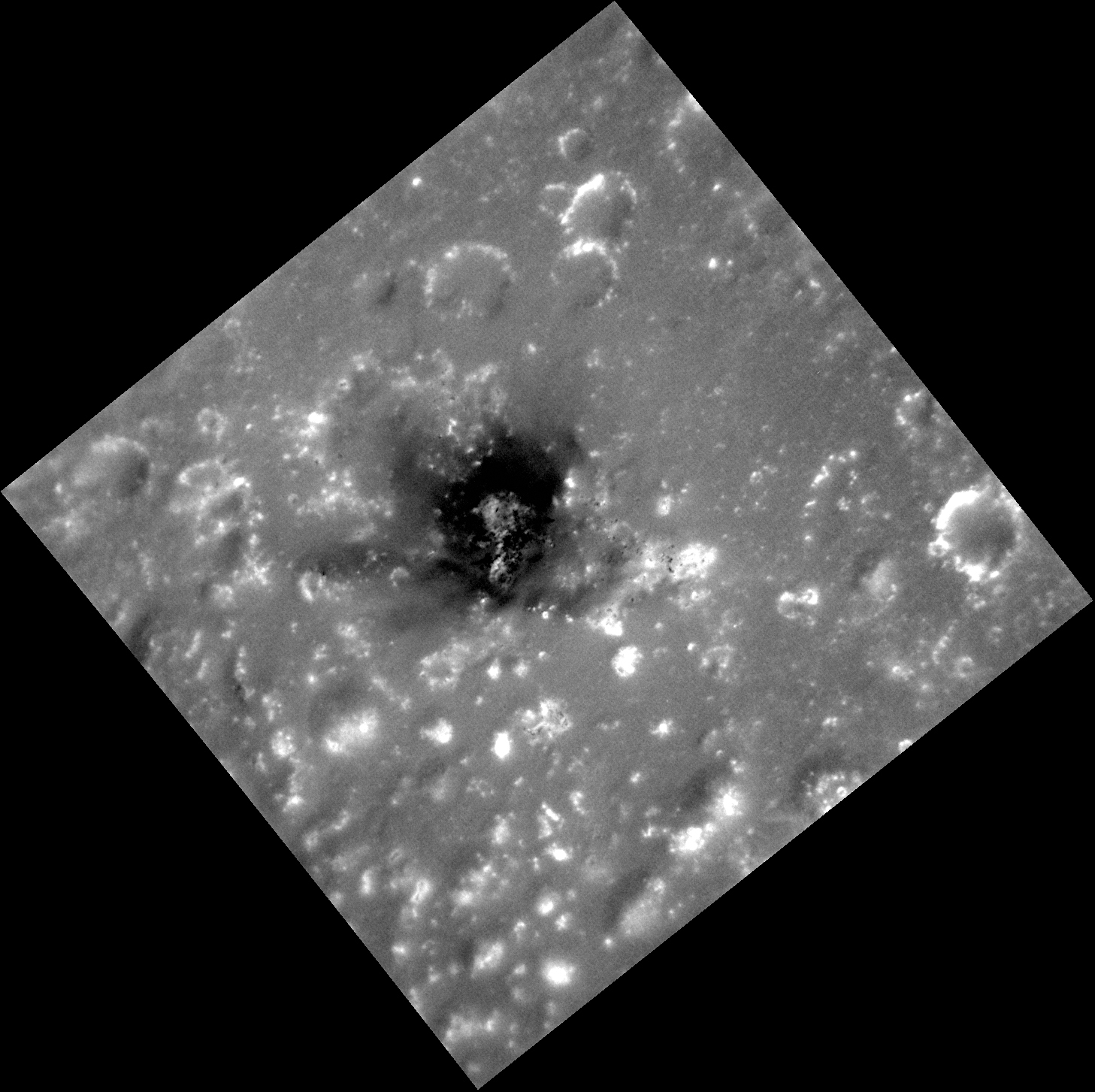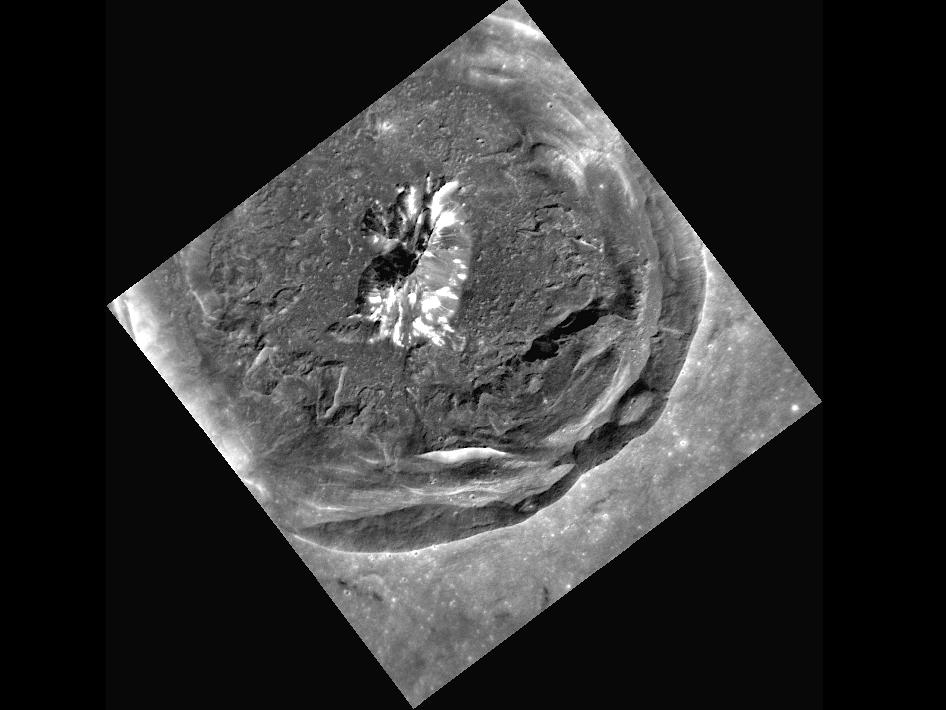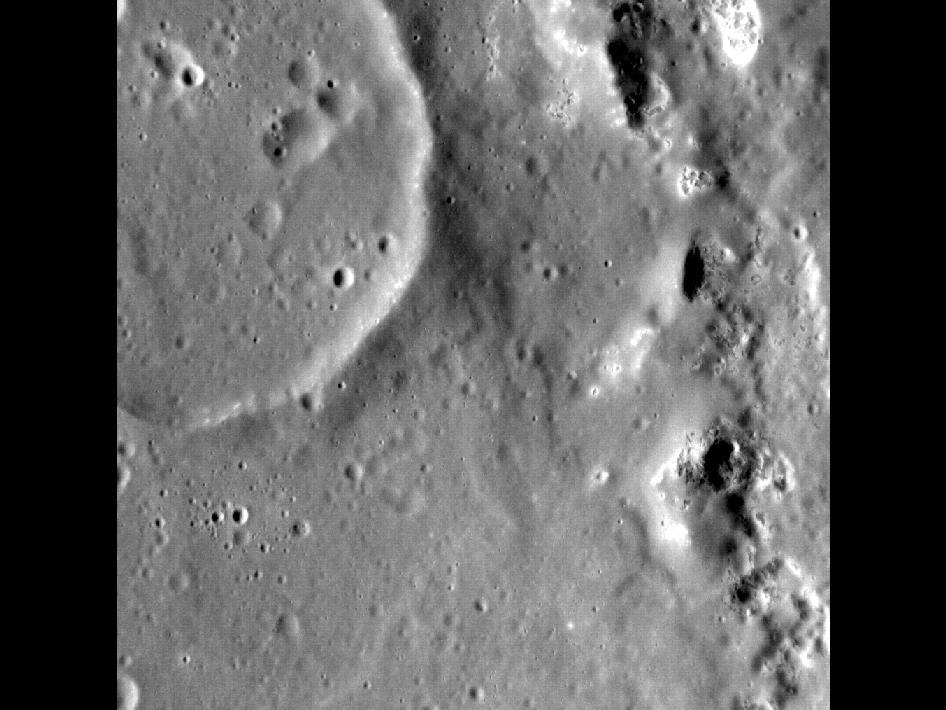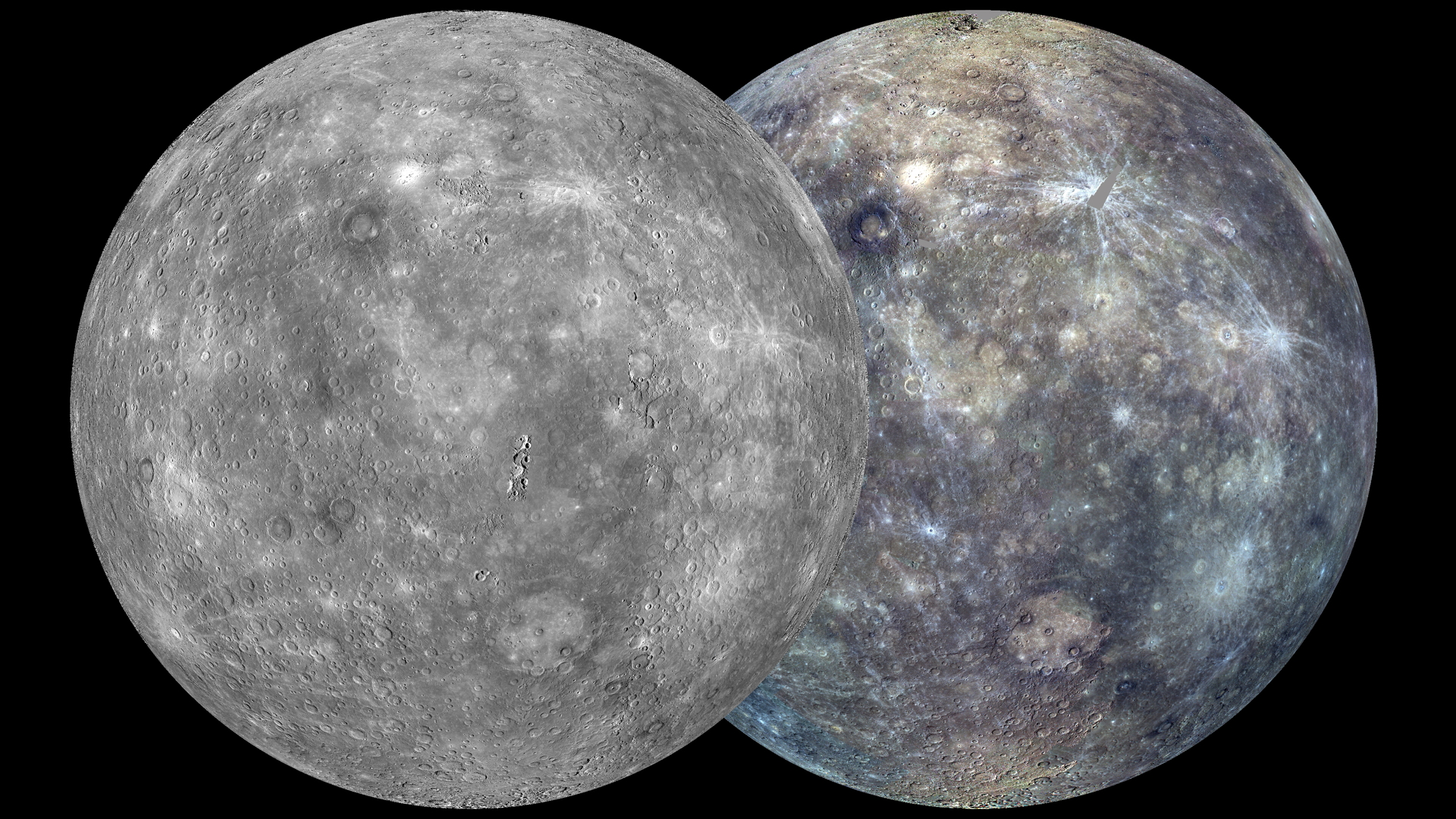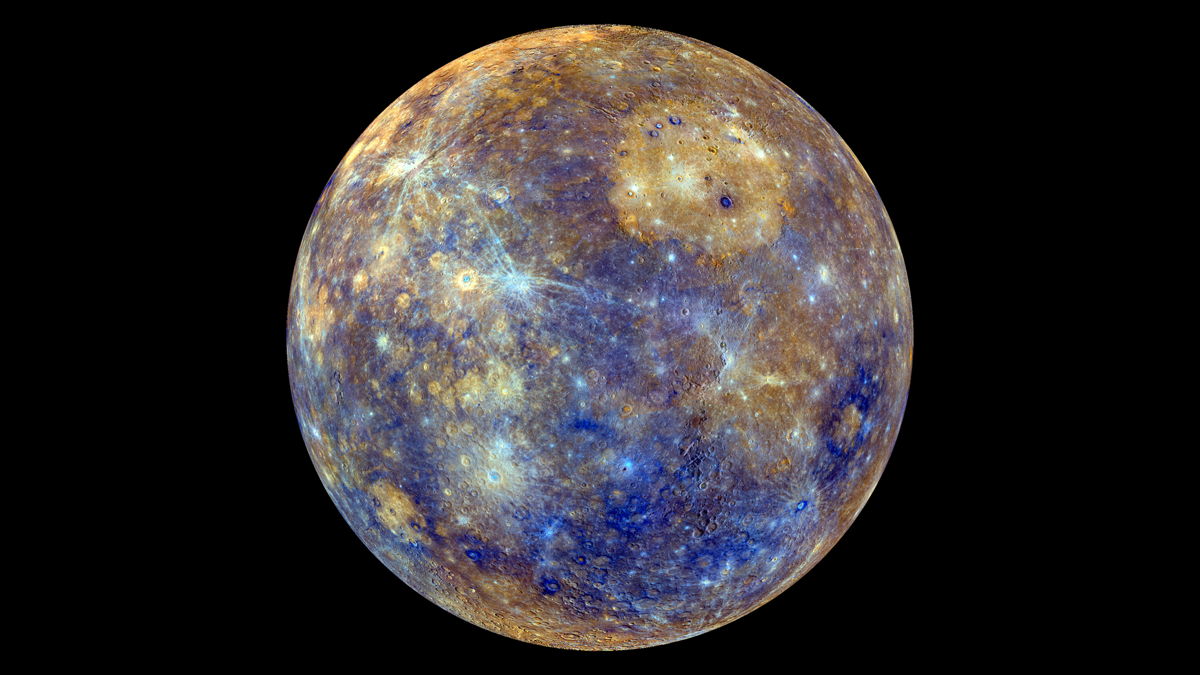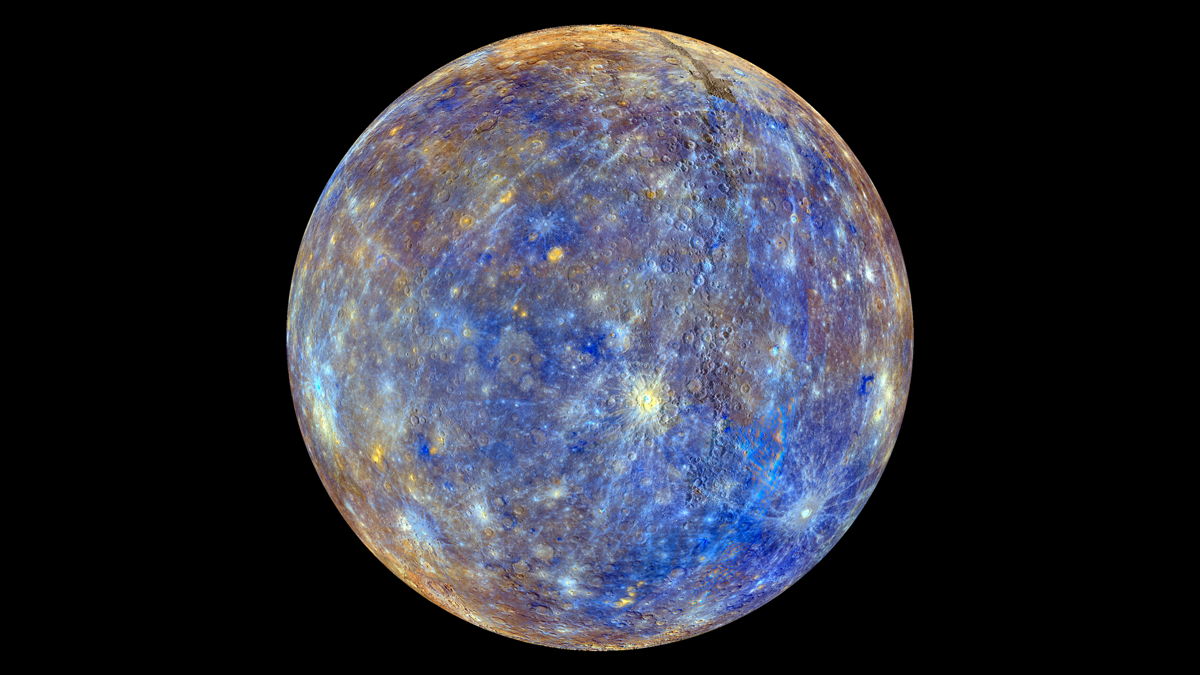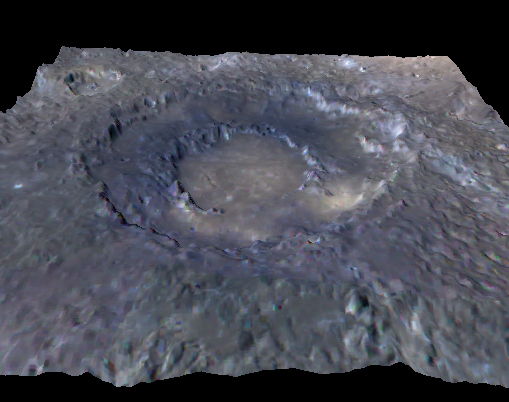Photos of Mercury from NASA's Messenger Spacecraft
100 Percent Coverage
At the very end of 2012, MESSENGER obtained the final image needed to view 100 percent of Mercury's surface under daylight conditions. The mosaics shown here cover all of Mercury's surface and were produced by using the monochrome mosaic released by NASA's Planetary Data System (PDS) on March 8, 2013, as the base. This image was released May 31, 2013.
Through the Ages
This mosaic was created by combining two images that were taken 96 seconds apart. The MESSENGER spacecraft has to be farther from the planet, in the southern portion of its orbit, to acquire these views. Mercury's cratered surface is highlighted dramatically near the terminator (the division between the sunlit dayside and the dark nightside of the planet), reflecting Mercury's history of being battered by impacting objects through the ages. This image was released May 7, 2013.
Where is MESSENGER?
Using the new global mosaic of Mercury, the feature now shows two views of the spacecraft's ground track: one with a 10.5° field of view like the Wide Angle Camera (middle of top row) and one with a 1.5° field of view like the Narrow Angle Camera (right corner of top row). This image was released May 29, 2013.
Dark and Explosive?
This high-resolution image shows a region of the southern rim of the large Caloris basin. In the center is an irregularly shaped depression believed to be a pryoclastic volcanic vent. In this previously posted image, you can see this feature in the upper right as having a reddish color with a dark center. This image was released May 5, 2013.
Come Closer, Cunningham
This new, high-resolution view of Cunningham crater was recently acquired by MESSENGER. What you can't see in this image, which shows striking details of the crater's interior, is the extensive set of rays associated with Cunningham. The bright rays of Cunningham indicate that the crater is relatively young, having formed on Mercury likely within the last billion years. This image was released May 5, 2013.
Filling the Void
Inside the large peak-ring basin Praxiteles sits this small, unnamed crater that has been partially flooded with volcanic material. The flooded 25-km-diameter crater postdates the formation of the nearly 200-km basin but predates the flow that filled it. Such stratigraphic relationships help planetary geologists decipher the history of planetary surfaces. This image was released April 10, 2013.
Mercury Global Maps
Scientists use images from NASA's Messenger spacecraft to create these global views of Mercury, the most complete maps ever. The images were released on Feb. 22, 2013.
Breaking space news, the latest updates on rocket launches, skywatching events and more!
Colors of the Innermost Planet: View 1
This colorful view of Mercury was produced by using images from the color base map imaging campaign during MESSENGER's primary mission. Image released Feb. 18, 2013.
Colors of the Innermost Planet: View 2
This colorful view of Mercury was produced by using images from the color base map imaging campaign during MESSENGER's primary mission. These colors are not what Mercury would look like to the human eye, but rather the colors enhance the chemical, mineralogical, and physical differences between the rocks that make up Mercury's surface. Image released Feb 18, 2013.
Mercury's Rachmaninoff Impact Basin
This is a still image taken from a rotating movie of Mercury's Rachmaninoff impact basin. Image released 15, 2013.
